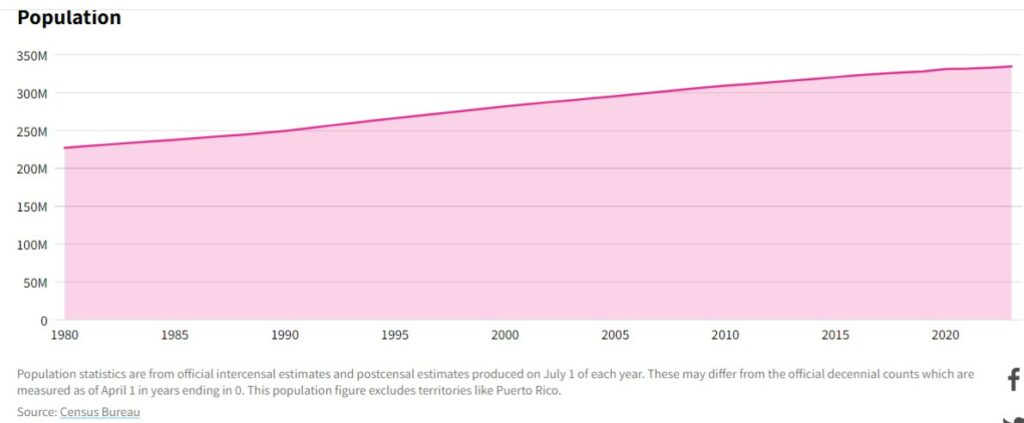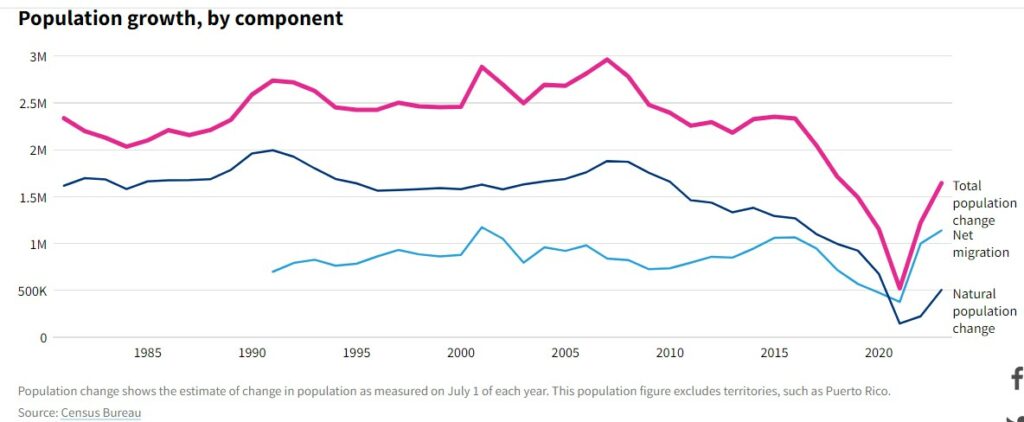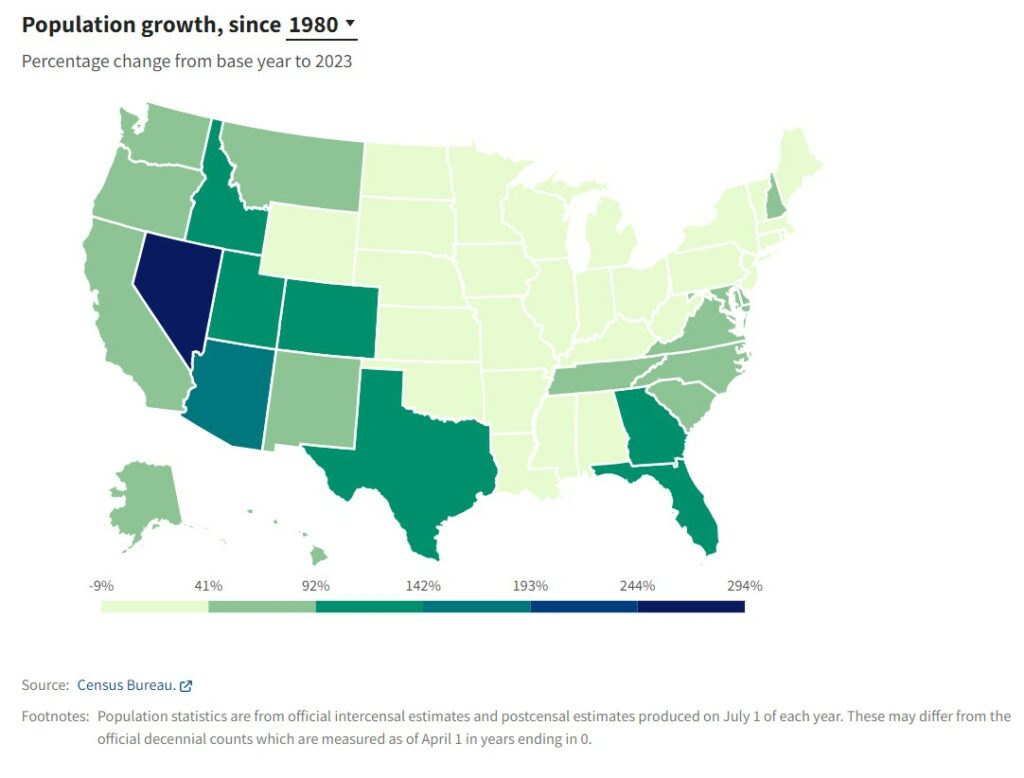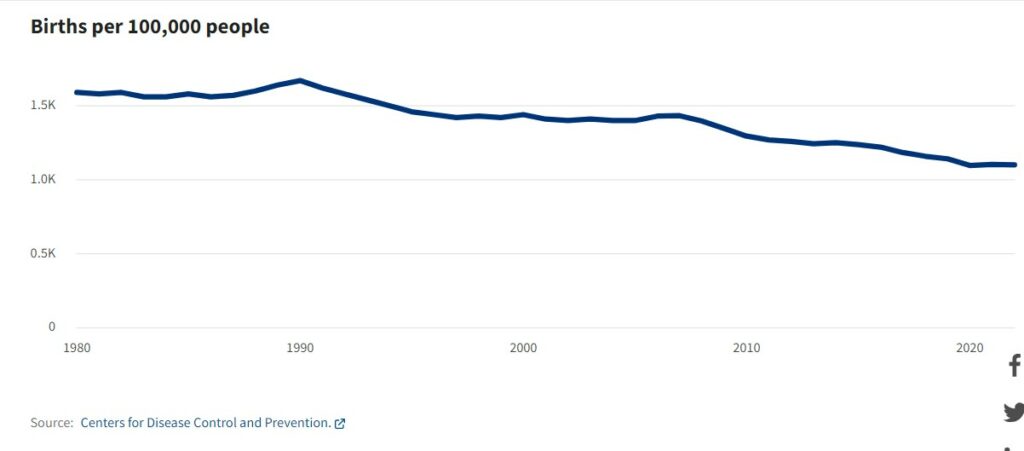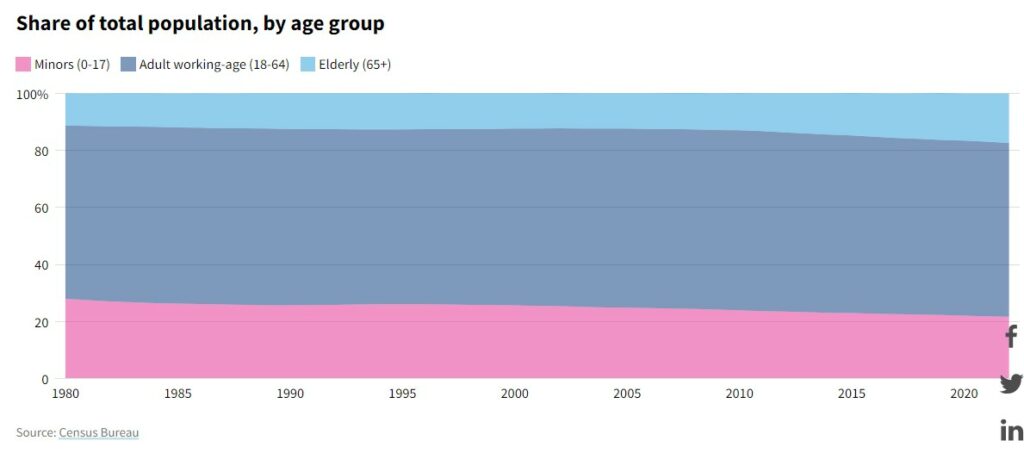In 2006, Joel Garreau (Smithsonian) wrote: “The United States’ population is growing at the rate of almost 1 percent per year, thanks in part to immigration and its secondary effects. Not only does the United States accept more legal immigrants as permanent residents than the rest of the world combined, but these recent arrivals tend to have more children than established residents—until, as their descendants attain affluence and education, the birthrates of these Americans also drop below replacement levels. Overall—that is, counting both immigrants and the native-born—the United States has a replacement rate of 2.03 in 2006.” From the year 2006 onward, replacement has been decreasing. Statistical Replacement Rate in 2020 fell to 1,637.5
Topics:
Bill Haskell considers the following as important: immigration, Journalism, politics, population
This could be interesting, too:
Robert Skidelsky writes Lord Skidelsky to ask His Majesty’s Government what is their policy with regard to the Ukraine war following the new policy of the government of the United States of America.
Joel Eissenberg writes No Invading Allies Act
Ken Melvin writes A Developed Taste
Bill Haskell writes The North American Automobile Industry Waits for Trump and the Gov. to Act
In 2006, Joel Garreau (Smithsonian) wrote:
“The United States’ population is growing at the rate of almost 1 percent per year, thanks in part to immigration and its secondary effects. Not only does the United States accept more legal immigrants as permanent residents than the rest of the world combined, but these recent arrivals tend to have more children than established residents—until, as their descendants attain affluence and education, the birthrates of these Americans also drop below replacement levels. Overall—that is, counting both immigrants and the native-born—the United States has a replacement rate of 2.03 in 2006.”
From the year 2006 onward, replacement has been decreasing. Statistical Replacement Rate in 2020 fell to 1,637.5 births per 1,000 women and down from 1.7 births per 1,000 women in 2019 (Angry Bear).
If my math is correct, replacement rate in 2022 fell slightly to 1.665 and 1.620 in 2023. In other words, we will see a decreasing population which is not necessarily good for economic reasons (The birthrate [below] at 1,101 is solely birth rate which would not include immigration). With immigration I suspect it should be 1,701 to be even close to other numbers cited. I can not find the Census version of this numeric tor 2024. It still does not change the dynamic. The US is not replacing its population with younger workers either by birth or immigration. Baby boomers are checking out of the work force and life for that matter. We are not replacing ourselves with enough birth or immigration.
The US may begin to experience the same as many European countries having been. An aging work force. If you notice Joel Garreau (above) discusses a replacement rate which includes immigration to reach 2.03. The link to his commentary is there. This is part 1 or two parts. The next part will talk about immigration. Part 1 is now.
~~~~~~~~
2024 Current State of the Union: US Population, usafacts.org
How is the population changing and growing? . . . A summation.
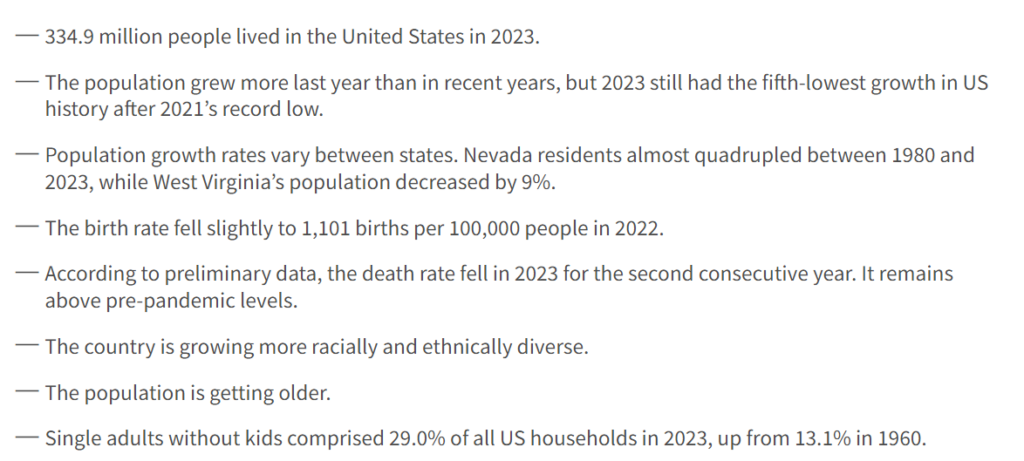
334.9 million people lived in the United States in 2023.
That’s a 47.4% increase since 1980.
The population grew more last year than in recent years, but 2023 still had the fifth-lowest growth in US history after 2021’s record low.
Births, deaths, and net migration (the net effect of people moving into and out of the country) caused the population to grow by 1.6 million last year, or 0.5%.
Population growth rates vary between states. Nevada residents almost quadrupled between 1980 and 2023, while West Virginia’s population decreased by 9%.
The population also more than doubled in Arizona, Utah, Florida, Texas, Idaho, Colorado, and Georgia.
The birth rate fell slightly to 1,101 births per 100,000 people in 2022.
This is the second lowest rate since the beginning of available data and near the record low of 1,097 births per 100,000 reached in 2020.
According to preliminary data, the death rate fell in 2023 for the second consecutive year. It remains above pre-pandemic levels.
2023’s death rate of 919.8 deaths per 100,000 people exceeded that of any year from 1974 to 2019.
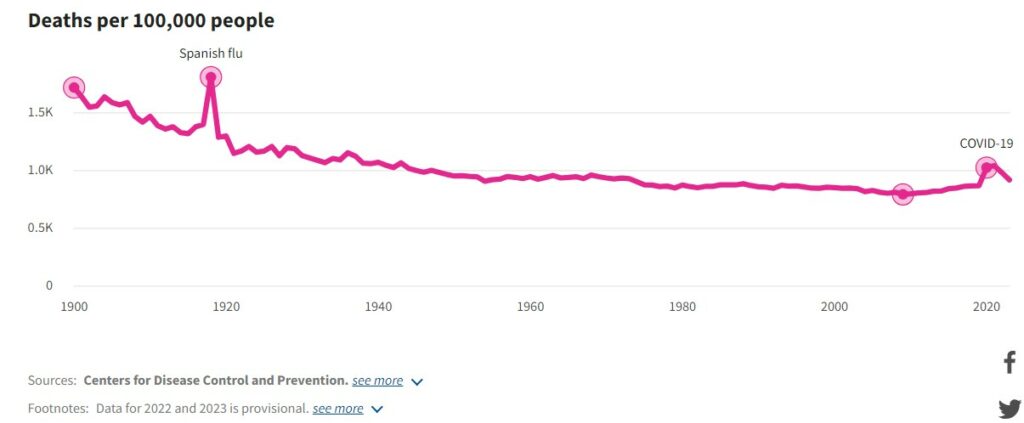
The country is growing more racially and ethnically diverse.
From 2000 to 2022, the Hispanic share of the US population grew faster than any other, rising from 12.6% to 19.1%.
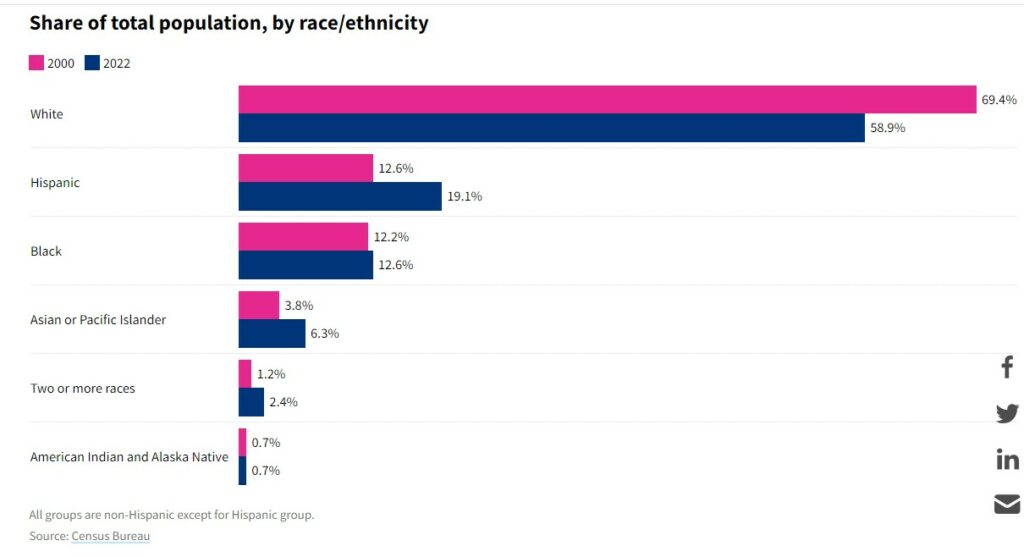
The population is getting older.
The proportion of working-age adults in the US remained relatively constant since 1980. However, the share of people aged 65 and over grew by 6.0 percentage points, while the percentage younger than 18 fell by 6.3 points.
Single adults without kids comprised 29.0% of all US households in 2023, up from 13.1% in 1960.
The share of households headed by married parents declined from 44.2% to 17.9% between 1960 and 2023.

The results of this report do not portend well for the United States. As the population ages, we will not have enough Labor to supply companies even if companies move back from Asia. You can see similar in Europe which has a much older Labor Force. Joel Garreau talked about a much younger US workforce (-35) in 2006.
U.S. Population Trends Return to Pre-Pandemic Norms (census.gov)
U.S. Fertility Rate 1950-2024. www.macrotrends.net. Retrieved 2024-05-27.

